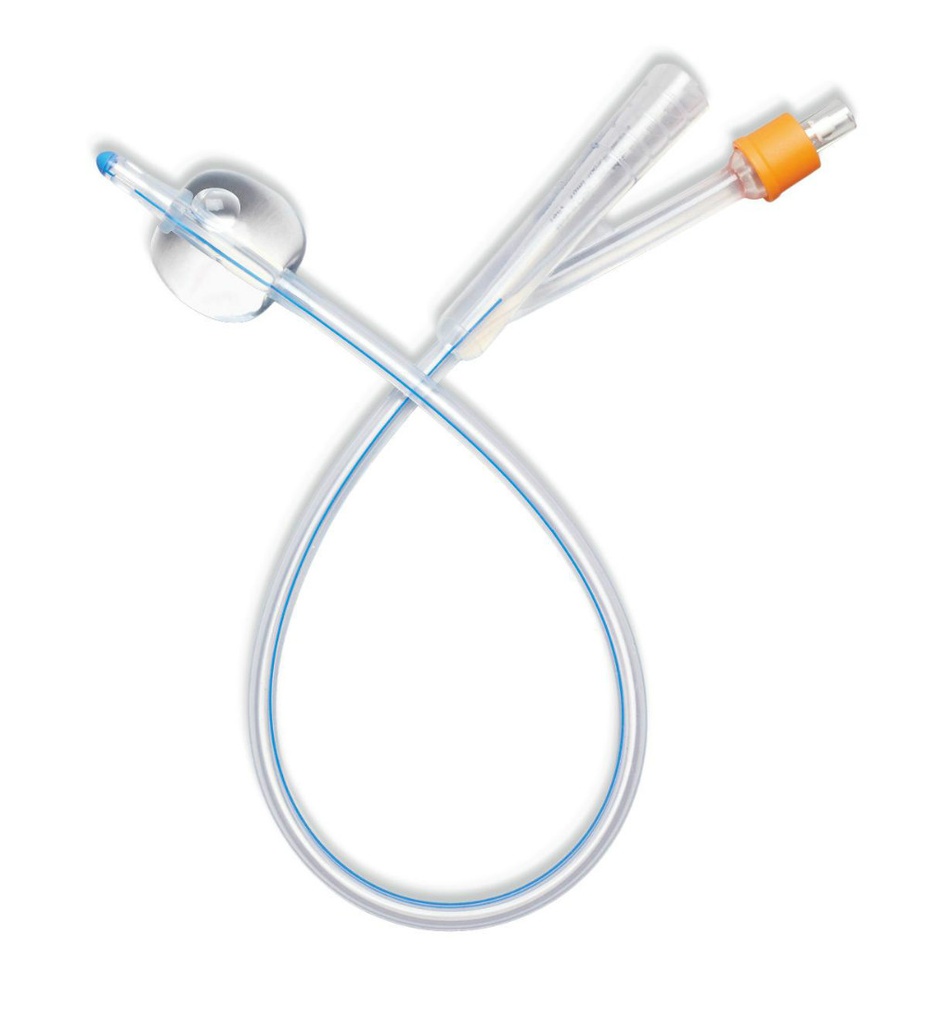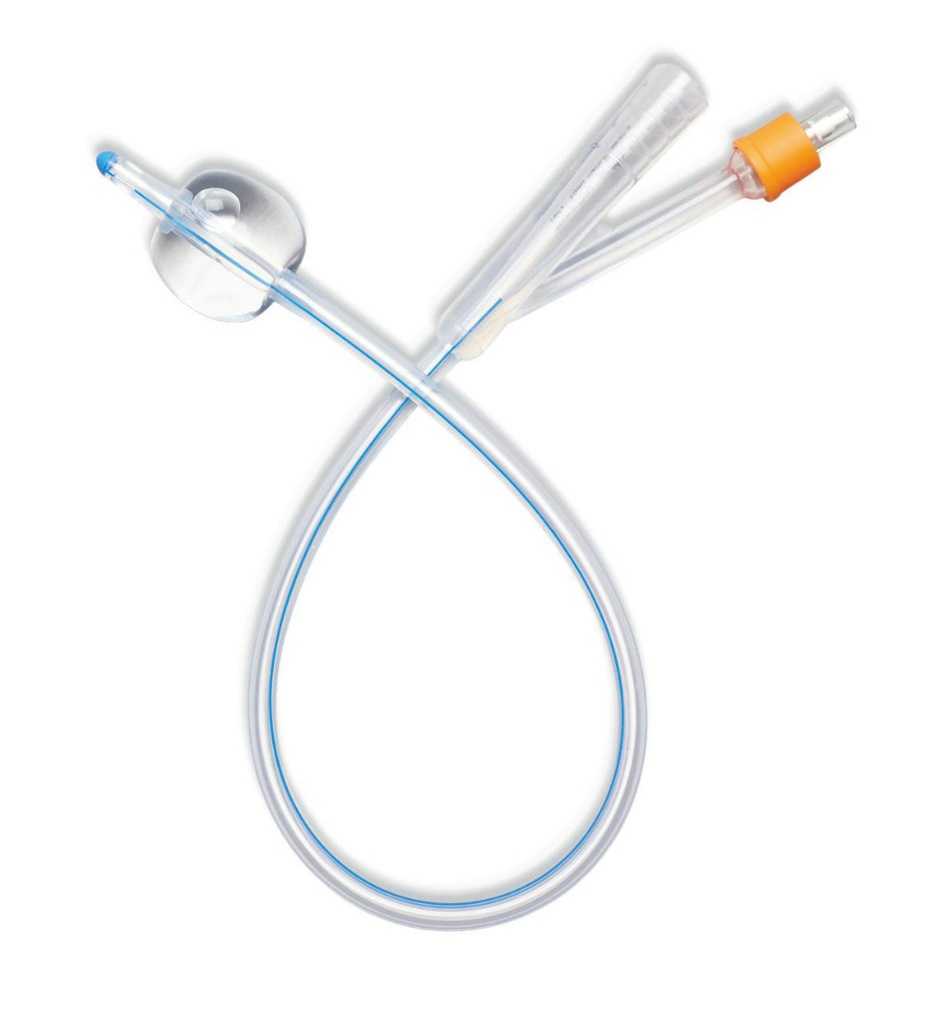URINARY CATHETER, FOLEY 2 way, SI, baloon, ster, s.u., CH18
Valid Article
URINARY CATHETER, FOLEY, SILICONE
Definition
A sterile, flexible tube made of silicone, with an inflatable balloon at its distal tip intended to be inserted through the urethra and retained in the urinary bladder to function as an indwelling therapeutic device for urinary incontinence (e.g., following a urological surgery procedure), or as a means to void for non-ambulatory patients.
Specifications
Quality standards
Technical specifications
- 2 way urinary catheter with balloon:
- central canal for drainage of urine: straight distal end, conical shaped, with lateral openings
- lateral canal is for inflating the balloon (Luer connection)
- the amount of sterile water to be inserted into the balloon is usually printed on the side of the nozzle end, usually 5 - 15 ml for catheters CH 14 - 18
- the nozzle is equipped with a valve mechanism, the water will remain trapped inside the balloon
- Length: 30 - 40 cm
- The colour of the connecting piece or the filling opening of the balloon in Foley-type catheters represents a colour-code and designates the external diameter of the catheter
| size | ext diam mm | colour |
| CH14 | 4.7 mm | green |
| CH16 | 5.3 mm | orange |
| CH18 | 6.0 mm | red |
- Sterile, for single use
- Material: silicone:
- More resistant to wear and tear than the siliconized latex type.
- A little more rigid than the siliconized latex catheters, which may prove to be of benefit when an obstruction (like a prostate) has to be passed.
- Common disadvantage is the fact that the balloon, when empty, often forms a slight thickening, thereby increasing the diameter of the catheter by a CH or two, which may sometimes be just too much to get it passed a stricture.
- The plain silicone Foley catheters are often transparent, although they also come in white, blue, green and other colors.
Packaging & Labelling
Double sterile packaging per unit in peel-open pack
Instructions for use
Please consult the “Manual of nursing Care Procedures, MSF, 2020” available online via the Nursing care working Group sharepoint page.
Precautions for Use
A silicone Foley catheter can be left in the bladder for 6-8 weeks.
Encrustrations tend to form at the tip of the catheter which may lead to narrowing of the hole or an increased diameter, that may cause pain and bleeding upon removal. Therefore, it is advised not to stretch the time the catheter is left inside the bladder
The balloon should be inflated with sterile water, never with air. Physiological saline (NaCl) is not recommended as it may degrade the balloon.
Since the balloon tends to empty itself by loss of water due to a semi-membranous effect of the wall of the balloon, it will need to be refilled every now and then if remaining for long periods.
If necessary, the catheter may be lubricated in order to make its insertion easier. Use sterile lubricant jelly (see related articles below) or, failing that, sterile water.
MSF requirements
Silicone catheters should be used specifically for preventing obstructions and crusts (larger internal lumen) in long-term catheterization.
Adapted for patient with latex-sensitivity.





![[SCTDCAUR18F] URINARY CATHETER, FOLEY 2 way, balloon, sterile, s.u., CH18](/web/image/product.template/571856/image_256/%5BSCTDCAUR18F%5D%20URINARY%20CATHETER%2C%20FOLEY%202%20way%2C%20balloon%2C%20sterile%2C%20s.u.%2C%20CH18?unique=609ddfa)